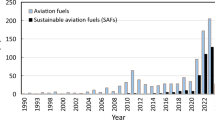Abstract
Titanium armor is being incorporated into the design of existing and future U.S. Army combat vehicles because it offers the best method of reducing vehicle weight and thus improving performance. Titanium’s excellent specific mechanical and ballistic properties, as well as ease of fabrication, will likely make it a part of the U.S. Army’s future combat system. How large a part it will be will depend on an overall cost/performance optimization.
Similar content being viewed by others
References
J.S. Montgomery et al., “Low-Cost Titanium Armors for Combat Vehicles,” JOM, 49 (5) (1997), pp. 45–47.
Department of Defense, Military Standard: V 50 Ballistic Test for Armor, MIL-STD-662E (1987).
W.A. Gooch et al., “Ballistic Performance of Titanium Against Laboratory Penetrators with Aspect Ratios of Tenor Greater,” Proc. 15th Int. Symp. Ballistics (Medicine Hat, Alb., Canada: Nat’l. Defence Rsch. Establ., 1995).
W.A. Gooch et al., Ballistic Penetration of Titanium Alloy Ti6Al-4V, in Proceedings of the Lightweight Armor Systems Symposium ’95 (Shrivenham, U.K.: The Royal Military College of Science, June 1995).
W.A. Gooch, M.S. Burkins, and K. Frank, “Ballistic Performance of Titanium Against Laboratory Penetrators,” in Pro.1st Australian Congress on Applied Mechanics ’96 (Melbourne, Australia: Inst. of Engineers, February 1996).
M.S. Burkins, J.I. Paige, and J.S. Hansen, A Ballistic Evaluation of Ti-6Al-4V vs. Long Rod Penetrators, Army Research Laboratory Technical Report ARL-TR-1146 (Aberdeen Proving Ground, MD: U.S. Army Research Laboratory, July 1996).
M.G.H. Wells et al., “Evaluation of an Electron Beam Single Melt of Ti-6Al-4V Plate and Ballistic Property-Texture Relationships,” Titanium Workshop Proceedings, ed. W.A. Gooch (Aberdeen Proving Ground, MD: U.S. Army Research Laboratory, February 2000).
M.S. Burkins and W.W. Love, “Effect of Annealing Temperature on the Ballistic Limit Velocity of Ti-6Al-4V ELI,” Proc. 16th Int. Symp. Ballistics (Medicine Hat, Alb, Canada: Nat’l Defence Rsch. Establ. September 1996).
M.S. Burkins, W.W. Love, and J.R. Wood, Effect of Annealing Temperature on the Ballistic Limit Velocity of Ti-6Al-4V ELI, ARL-MR-359 (Aberdeen Proving Ground, MD: U.S. Army Research Laboratory, August 1997).
M.S. Burkins et al., The Effect of Thermomechanical Processing on the Ballistic Limit Velocity of Extra Low Insterstitial Titanium Alloy Ti-6Al-4V, ARL-MR-486 (Aberdeen Proving Ground, MD: U.S. Army Research Laboratory, July 2000).
M.G.H. Wells, D.J. Snoha, and M.E. Wells, An Evaluation of Former Soviet Union Welding Processes on Commercially Pure Titanium, U.S. Army Research Laboratory Technical Report, in process.
Author information
Authors and Affiliations
Additional information
For more information, contact J.S. Montgomery, Army Research Laboratory, Weapons and Materials Research Directorate, Aberdeen Proving Ground, Maryland 21005-5069; e-mail jmontgom@arl.army.mil.
Rights and permissions
About this article
Cite this article
Montgomery, J.S., Wells, M.G.H. Titanium armor applications in combat vehicles. JOM 53, 29–32 (2001). https://doi.org/10.1007/s11837-001-0144-2
Issue Date:
DOI: https://doi.org/10.1007/s11837-001-0144-2




